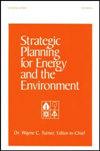Analysis and Prediction of Factors Influencing Carbon Emissions of Energy Consumption Under Climate Change
Q3 Environmental Science
Strategic Planning for Energy and the Environment
Pub Date : 2023-12-24
DOI:10.13052/spee1048-5236.4314
引用次数: 0
Abstract
Climate change is one of the major challenges currently facing the world. The factors influencing the carbon emission of energy consumption and the future trend are important guidance for proposing scientific carbon reduction strategies to mitigate climate change. In this paper, the Logarithmic Mean Divisia Index (LMDI) model and stochastic impacts by regression population, affluence and technology (STIRPAT) model are established to analyze and predict the carbon emission of energy consumption. The LMDI model is used to factorize the CO2 changes generated by residential domestic energy consumption, and to decompose and analyze the carbon emission factors of residential domestic energy consumption in terms of energy carbon emission intensity, energy consumption structure, energy consumption intensity, economic development, and population to determine the driving factors leading to carbon emission changes; based on the above study, we set up nine different development scenarios and applied the scalable stochastic environmental impact assessment model to project energy carbon emissions in 2035; based on carbon emission prediction and analysis, the CO2 emissions of total energy consumption, total electricity consumption, industrial energy consumption and terminal energy consumption were selected, and the correlation coefficients with relevant climate indicators such as temperature change and humidity change were analyzed, and the stress model of energy consumption on climate change was constructed. The results show that: the correlation coefficients of energy consumption indicators and temperature change indicators all pass the significance test at P = 0.01 level, among which the correlation coefficients with temperature difference are the highest, all of them are greater than 0.9 and pass the significance test at P = 0.001 level; among the indicators of energy consumption, the correlation coefficient between total industrial energy consumption and temperature difference was slightly higher than that of total energy consumption and electricity consumption; the stress relationship between the increase of energy consumption and the temperature difference is consistent with the growth of the third polynomial curve.气候变化下能源消耗碳排放影响因素分析与预测
气候变化是当前世界面临的重大挑战之一。能源消耗碳排放的影响因素及未来趋势对提出科学的碳减排策略以减缓气候变化具有重要指导意义。本文建立了对数平均指数(LMDI)模型和回归人口、富裕程度和技术的随机影响(STIRPAT)模型来分析和预测能源消耗的碳排放。利用 LMDI 模型对居民生活能源消费产生的二氧化碳变化进行因子化,从能源碳排放强度、能源消费结构、能源消费强度、经济发展、人口等方面对居民生活能源消费的碳排放因子进行分解分析,确定导致碳排放变化的驱动因素;在上述研究的基础上,设定九种不同的发展情景,应用可扩展的随机环境影响评估模型对 2035 年的能源碳排放进行预测;在碳排放预测分析的基础上,选取能源消费总量、电力消费总量、工业能源消费总量和终端能源消费总量的二氧化碳排放量,分析其与气温变化、湿度变化等相关气候指标的相关系数,构建能源消费对气候变化的压力模型。结果表明:能耗指标与温度变化指标的相关系数均在 P = 0.01 水平上通过显著性检验,其中与温差的相关系数最高,均大于 0.9,且在 P = 0.001 水平下通过显著性检验;在能耗指标中,工业总能耗与温差的相关系数略高于总能耗与电耗的相关系数;能耗增加与温差的应力关系符合三次多项式曲线的增长关系。
本文章由计算机程序翻译,如有差异,请以英文原文为准。
求助全文
约1分钟内获得全文
求助全文
来源期刊

Strategic Planning for Energy and the Environment
Environmental Science-Environmental Science (all)
CiteScore
1.50
自引率
0.00%
发文量
25
 求助内容:
求助内容: 应助结果提醒方式:
应助结果提醒方式:


